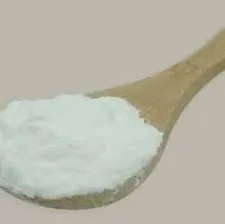Understanding UV Additives for Plastics Enhancing Durability and Longevity
In today’s world, plastics play an integral role across myriad applications, from packaging and consumer goods to automotive components and medical devices. While their versatility and cost-effectiveness are undeniable, plastics are often susceptible to degradation when exposed to ultraviolet (UV) light. This degradation can lead to discoloration, loss of mechanical properties, and ultimately, the failure of plastic products. To combat these issues, manufacturers have turned to UV additives, which serve to enhance the durability and longevity of plastics.
What are UV Additives?
UV additives are specialized compounds incorporated into plastic formulations to provide protection against the harmful effects of UV radiation. These additives can absorb, block, or stabilize UV radiation, preventing it from penetrating the polymer matrix and causing degradation. UV stabilizers are typically divided into two main categories UV absorbers and hindered amine light stabilizers (HALS).
1. UV Absorbers These compounds absorb harmful UV rays and convert them into harmless heat. This transformation effectively removes the potential for UV radiation to cause damage. Common examples of UV absorbers include benzophenone and benzotriazole derivatives.
2. Hindered Amine Light Stabilizers (HALS) HALS work differently by acting as scavengers that neutralize free radicals generated by UV exposure. This is critical because free radicals can lead to chain reactions that degrade the polymer's structure. HALS are particularly effective in preventing the yellowing and brittleness of plastics over time.
Benefits of Using UV Additives in Plastics
The incorporation of UV additives into plastic formulations confers several key advantages
1. Enhanced Durability By significantly slowing down the rate of degradation, UV additives extend the lifespan of plastic products. This is particularly beneficial for items exposed to outdoor environments, such as garden furniture, automotive parts, and construction materials.
uv additive for plastic

2. Preservation of Aesthetic Qualities Plastics often suffer from discoloration and fading due to UV radiation. UV additives help maintain the original color and transparency of products, ensuring they remain visually appealing over time.
3. Improved Mechanical Properties Exposure to UV light can make plastics brittle, leading to cracks and physical failure. UV additives help retain the mechanical strength and flexibility of polymers, ensuring they perform effectively throughout their intended lifespan.
4. Broader Application Range With the protective capabilities that UV additives provide, manufacturers can expand the applications of certain plastics, making them suitable for outdoor usage and environments where high UV exposure is a concern.
Challenges in the Use of UV Additives
While UV additives offer significant benefits, their implementation is not without challenges. One issue is that the effectiveness of UV stabilizers can decrease over time, particularly in environments with high UV exposure. Moreover, the choice of additive must be carefully considered, as some additives may interact adversely with other components in the plastic formulation, leading to issues with compatibility and performance.
Additionally, regulatory considerations must be taken into account, as certain UV additives may be restricted or banned in specific applications due to environmental and health concerns. Manufacturers must balance performance with compliance when selecting UV additives for their products.
Conclusion
As the demand for durable and aesthetically pleasing plastics continues to grow, the role of UV additives has become increasingly important. By providing essential protection against UV degradation, these additives enable manufacturers to create longer-lasting products that can withstand the rigors of daily use and exposure to sunlight. However, choosing the right UV additives requires an understanding of their mechanisms, benefits, and potential drawbacks. As research and development in this field continue to advance, the future of UV additives in plastics promises to yield innovative solutions that meet both consumer needs and environmental standards.

